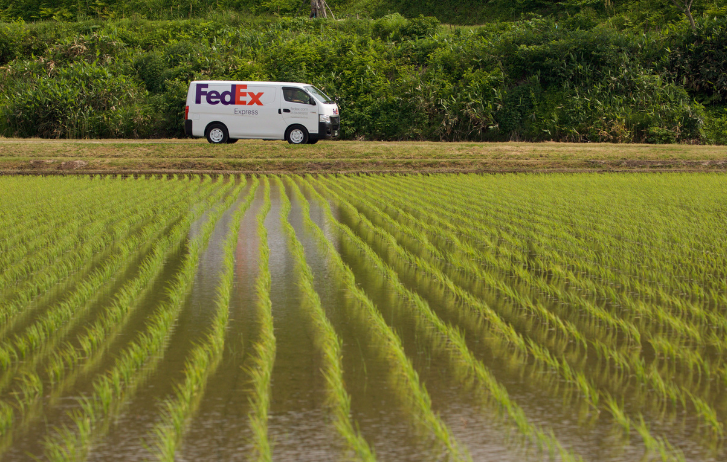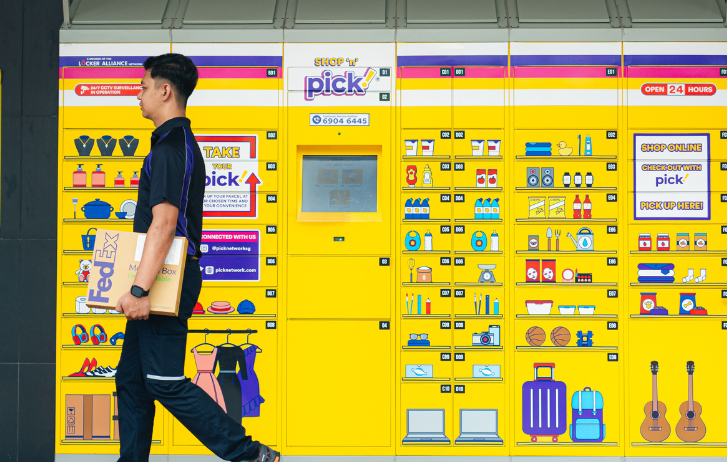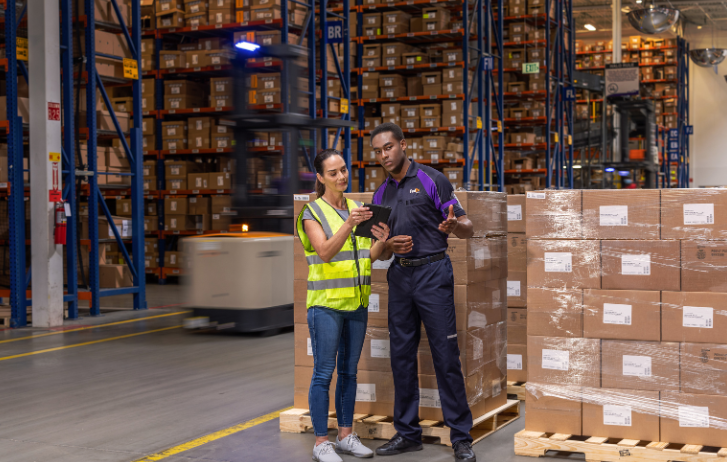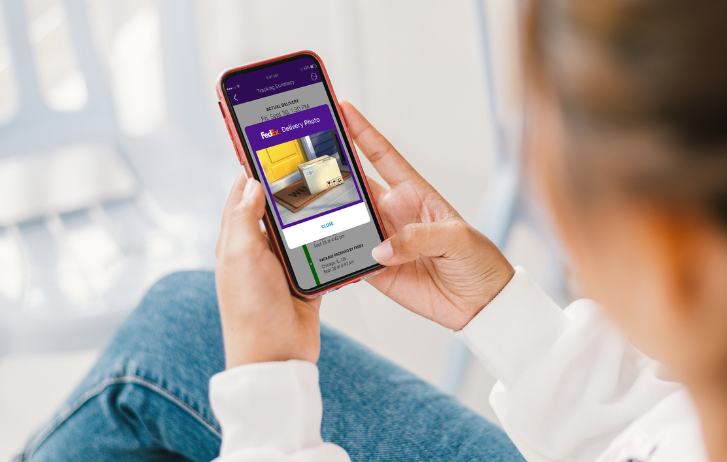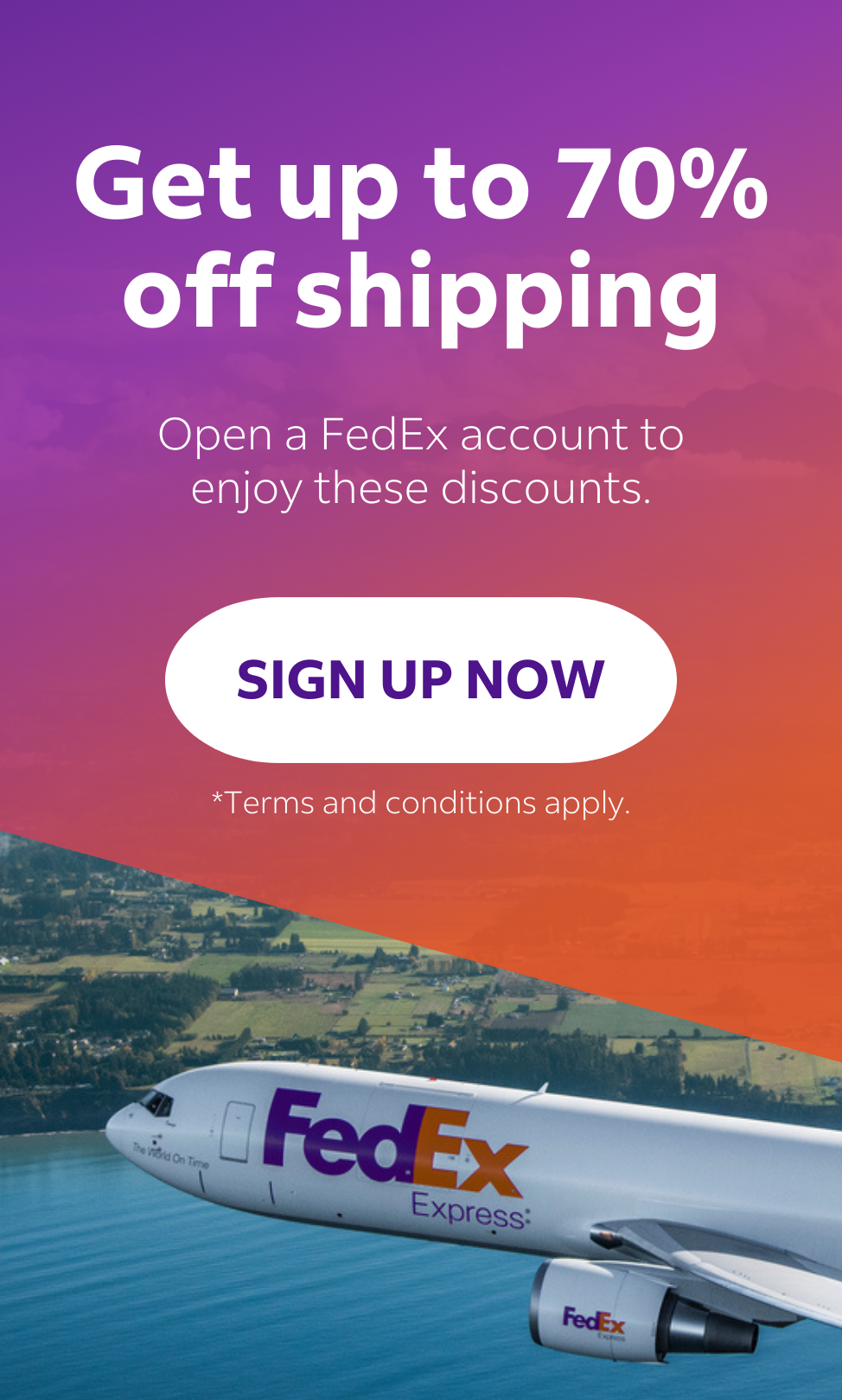
The Ultimate Guide To Last-Mile Delivery For E-Commerce Sellers In Asia Pacific
By FedEx | June 30, 2025
Last-mile delivery is a critical factor for APAC SMEs and e-commerce sellers. This guide explores delivery options, regional challenges, and how to choose the right logistics provider for cross-border e-commerce growth.
- Last-mile delivery can account for over 50% of total shipping costs, making it a critical focus for APAC SMEs aiming to improve customer satisfaction and margins.
- APAC logistics can be fragmented, with major differences between urban and rural delivery, digital readiness, and cross-border infrastructure.
- SMEs should evaluate providers based on six key factors, including service coverage, SLA performance, pricing, tracking, returns handling, and integration capabilities.
On a rainy weekday in Manila, a customer places an urgent order for a phone charger from a local e-commerce store. The site promises same-day delivery, but the package arrives two days late, soaked and untracked. The customer doesn’t just lose trust in the courier; they lose confidence in the brand.
Stories like this are common across Asia Pacific (APAC), where last-mile delivery isn’t just a logistics issue – it’s a business-critical experience that shapes customer trust, loyalty, and brand reputation. For small and medium-sized enterprises (SMEs) across the region, it’s no longer enough to offer competitive pricing and a seamless online shopping experience, the delivery experience must be fast, transparent, and dependable.
What is last-mile delivery in logistics? It refers to the final leg of the shipping journey, where a package is transported from a distribution hub to the customer’s doorstep. While it might be the shortest distance in the supply chain, it’s often the most expensive. Globally, last-mile delivery costs have increased to over 50% of total shipping costs.
The APAC reality
Asia Pacific is home to some of the world’s most complex logistics environments. From the hyper-dense cities of Jakarta, Bangkok, and Manila to the rural highlands of Vietnam and the island networks of Indonesia and the Philippines, delivery infrastructure is anything but uniform.
Urban congestion remains a key obstacle. Cities across Southeast Asia suffer from traffic jams, warehouse shortages, and limited road access, pushing businesses to adopt creative solutions like bike couriers, electric scooters, and micro-fulfillment centers.
Meanwhile, in rural or remote areas, such as Indonesia’s outer islands or the Philippine provinces, roads may be unpaved, inaccessible during monsoon seasons, or underserved by courier networks. Delivery times stretch longer, costs climb higher, and options narrow.
Consumer expectations further complicate the landscape. Retailers are expecting two-thirds of deliveries to be fulfilled within the same day or the next day by 2029. While digitally savvy shoppers in Singapore, Seoul, Shanghai, and Tokyo expect near-real-time delivery tracking, consumers in rural Cambodia may simply prioritize affordability and reliability. This digital divide means SMEs must tailor delivery offerings based on customer profiles.
Payment behaviors also shape delivery execution. In markets like Vietnam, Indonesia, and the Philippines, where cash-on-delivery remains dominant in rural areas, failed deliveries due to customer no-shows or address errors are common. This adds risk and cost to each transaction, especially for SMEs operating on thin margins.
Cross-border e-commerce in APAC, another growing trend, comes with its own hurdles. Last year, the region accounted for 23% of global cross-border e-commerce revenue, with a compound annual growth rate of 32.5% from 2024 to 2031. While e-commerce platforms make it easy for SMEs to access buyers across borders, fulfillment varies drastically by market due to inconsistent customs procedures, unclear return processes, and fragmented regulatory frameworks.
Which last-mile model fits your business?
To help navigate logistics decisions, here’s a breakdown of key last-mile delivery models that e-commerce sellers in APAC often use. Each has distinct advantages depending on geography, volume, and customer needs.
Self-pickup options
Self-pickup methods are increasingly popular among cost-conscious or convenience-driven consumers. These include:
- Buy online, pick up in-store (BOPIS): Customers place orders online and collect them at a physical store. This is ideal for omnichannel retailers.
- Pickup points and smart lockers: Goods are sent to smart lockers or designated locations where customers can retrieve them at their convenience. Common in metro APAC cities, these options reduce delivery costs and increase flexibility.
However, self-pickup options rely on customer effort and availability, which can reduce the overall convenience promised by e-commerce. For SMEs, missed pickups can lead to stock and refund complications.
Postal and national couriers
National postal services play a key role in last-mile delivery, especially in rural or less digitally connected communities. Their extensive networks and affordability make them suitable for lower-value or non-urgent deliveries. SMEs offering products like books, accessories, or long-shelf-life goods may find postal solutions cost-effective.
The downside? Postal services often lack the sophistication of real-time tracking, flexible delivery slots, or integrated returns – features that modern e-commerce customers increasingly expect.
Courier aggregators and delivery platforms
These technology platforms connect SMEs to a network of logistics providers, enabling real-time rate comparisons and flexible service selection. They are ideal for small businesses experimenting across markets or managing fluctuating order volumes.
Aggregators can help optimize cost and convenience, particularly for SMEs that want to avoid managing multiple provider contracts. However, they may not offer full control over service quality or customer experience, and reliance on algorithms can result in suboptimal delivery pairings in less-serviced areas.
On-demand and same-day services
These services are tailored for immediacy, especially within dense urban centers. Often powered by gig economy models or two-wheeler fleets, they cater to high-urgency categories like food, flowers, groceries, and fashion.
Their biggest strength lies in speed and customer convenience. However, they come with constraints: limited geographic reach, higher per-order costs, and logistical challenges during peak hours or in adverse weather conditions.
Third-party logistics (3PL) providers
Third-party logistics for SMEs allows businesses to outsource fulfillment, warehousing, and delivery – particularly useful for those that have outgrown manual fulfillment or need regional warehousing to reduce delivery times. These providers can offer better rates due to economies of scale, and many include value-added services like returns handling and API integration.
For SMEs eyeing regional expansion, working with a 3PL that understands local customs procedures, duties, and cross-border nuances can be invaluable. FedEx, for example, offers scalable and flexible solutions for growing e-commerce brands, with integrated logistics and technology-driven services that span from warehousing to final delivery.
In-house fleets
Some SMEs, particularly those in high-volume, hyperlocal businesses such as food delivery or flower shops, choose to manage their own delivery operations. This option offers full control over the delivery experience. However, it can be costly and requires route planning software, driver management, and continuous performance monitoring to scale efficiently.
How to choose the right delivery partner
Selecting the right last-mile delivery partner requires SMEs to go beyond pricing and evaluate a provider’s ability to meet today’s digital commerce demands. Here are six essential areas to consider when assessing delivery providers.
1. Geographic reach and service coverage
Start with a simple question: Can this provider reach all my customers reliably?
A provider that performs exceptionally in urban Singapore may struggle in the rural outskirts of Luzon. Coverage maps, delivery density by postal code, and service-level commitments in Tier 2 and Tier 3 cities are critical evaluation metrics.
Moreover, think beyond current needs. Will the provider grow with you as you explore cross-border e-commerce? Does it offer fulfillment support or consolidated warehousing in your target markets?
Their ability to handle customs documentation, taxes, and local last-mile handoffs will be crucial. Those with cross-border ambitions must consider not only international availability, but also how granular and consistent the provider’s last-mile network is within each country.
2. Delivery speed and SLA performance
Can the provider deliver within a timeframe that aligns with your customer promise? Your provider should commit to clearly defined Service Level Agreements (SLAs): for example, next-day delivery within city limits or two to three days across borders.
Consistency is as important as speed, especially in regions where customer expectations are rising rapidly. For categories like perishables, high-value electronics, or event-based products (such as birthday gifts), missing a delivery window is often worse than a delay.
3. Pricing structure and hidden costs
A competitive base rate may look attractive, but what happens at scale?
Evaluate whether the provider uses flat-rate pricing, weight-based tiers, or zone-based calculations. Consider extras: Do they charge for second delivery attempts? What about surcharges for peak hours, difficult addresses, or weekend deliveries?
E-commerce is seasonal. You should look for logistics providers who can scale up during peak periods like Singles’ Day or Lunar New Year, and scale down during quieter months without excessive costs. Transparent, predictable pricing allows you to accurately forecast cost-to-serve and protect margins. It also reduces billing disputes, a common pain point for growing businesses.
4. Tracking and customer communication
In an age of “track everything,” customers expect near-real-time visibility. Your delivery partner should offer end-to-end parcel tracking, ideally with customer notifications via SMS, email, or mobile app.
For businesses, backend visibility matters too: APIs that sync delivery status with your order management system help your support team pre-empt issues. This capability also reduces the volume of “Where is my order?” inquiries, cutting down on customer service overhead.
5. Returns, reverse logistics, and failed deliveries
Returns aren’t just a cost of doing business, they’re part of the buying journey.
Your logistics provider should support reverse pickups, allow flexible drop-off options, and handle damaged items efficiently. A seamless return process reassures customers and improves conversion, especially in fashion, electronics, and cross-border transactions.
Don’t overlook failed deliveries either. What is the provider’s policy when the recipient isn’t home? Are re-attempts included? Is the parcel returned to sender or held for pick-up? These policies affect both your operational costs and customer satisfaction rates.
6. Integration, automation, and support
In a high-velocity e-commerce business, manual processes quickly become bottlenecks. Seek providers that offer pre-built integrations with popular platforms like Shopify, WooCommerce, or your ERP system. Automation ensures tracking numbers are updated in near-real time, dispatch orders are created instantly, and delivery statuses are synced without human intervention.
Also important: Access to a responsive, local support team. When issues arise, can you speak to someone who understands your market and business context?
Turning the last mile into a competitive edge
Today’s consumer is more discerning and empowered than ever. If a business can’t meet expectations, the customer will likely shop elsewhere.
As digital shopping accelerates and infrastructure improves, SMEs that work with experienced logistics providers like FedEx can gain a significant edge. With deep regional expertise, cross-border capabilities, and customer-centric innovations such as near-real-time last-mile delivery tracking, FedEx helps SMEs turn delivery into a competitive advantage, transforming the last mile into a true brand differentiator.
***
Start shipping with FedEx here.
SHARE THIS STORY
- 85% Of APAC Businesses Plan To Expand Into Europe, According To New FedEx Report
- Generative AI: A New Frontier
- How To Ship A Giant Panda
- The Rise Of Intra-Asia Trade: Opportunities In The China-Southeast Asia Corridor
- Where Do Old Planes Go When They Retire?
- What’s So Dangerous About Coconuts? Your Guide To Dangerous Goods Logistics
Sign up now and save on your shipping rates!
Sign up now and earn discounts by shipping instantly with FedEx Ship ManagerTM at fedex.com.
Recommended For You

5 Logistics Trends Driving A Smarter Supply Chain
FedEx is delivering both transportation and digital solutions, as it builds a smarter supply chain for everyone.
Read More
Why Last-Mile Delivery Is Critical For Supply Chains In APAC
Learn how innovative last-mile delivery solutions reduce delays, improve customer satisfaction, and fuel business growth amid APAC’s e-commerce boom.
Read More
5 Tips For SMEs To Offer Free Shipping
E-tailers offering free shipping can reduce cart abandonment and increase sales. We deep dive into strategies for offering customers free delivery.
Read More